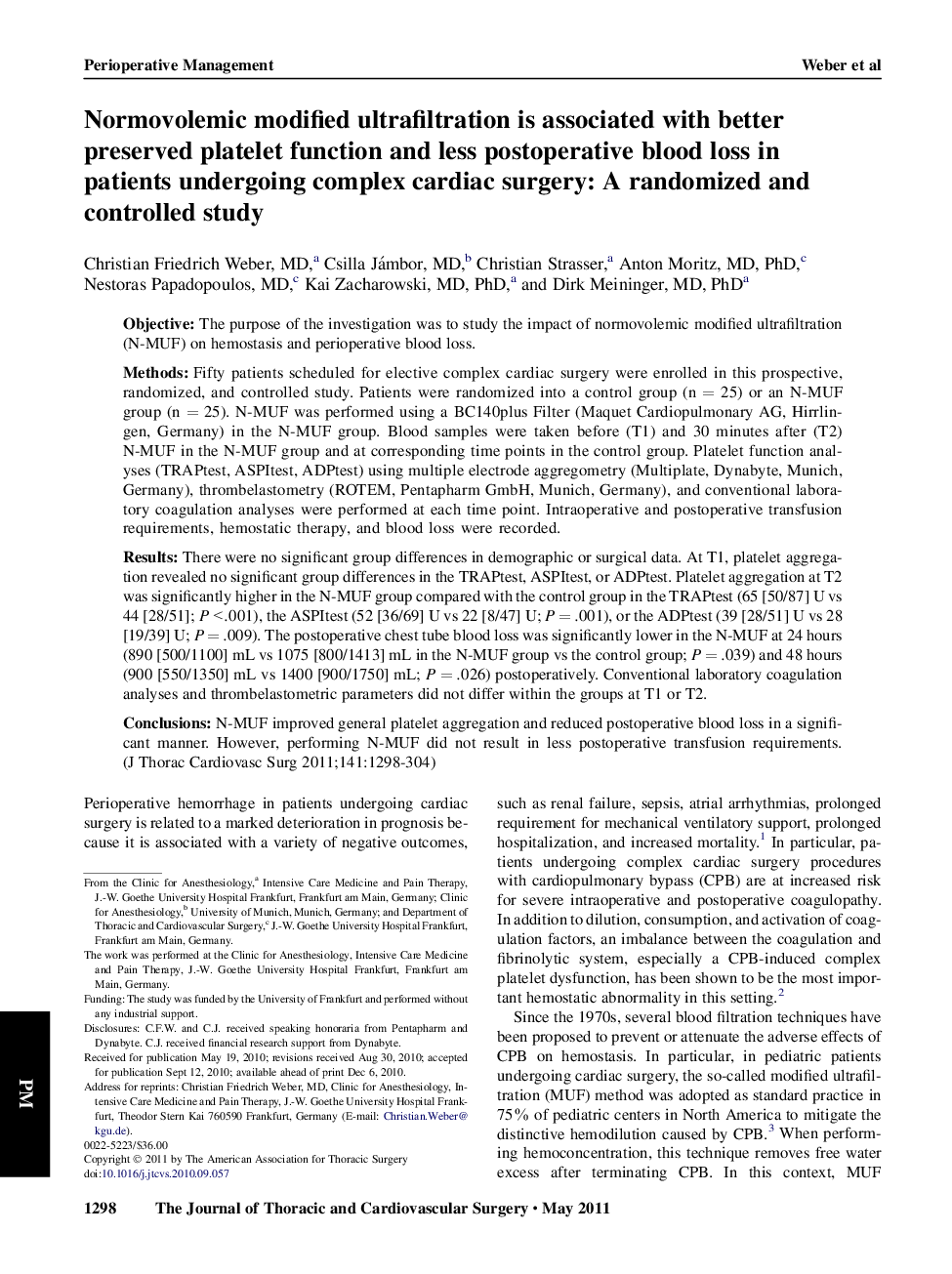| Article ID | Journal | Published Year | Pages | File Type |
|---|---|---|---|---|
| 5992198 | The Journal of Thoracic and Cardiovascular Surgery | 2011 | 7 Pages |
ObjectiveThe purpose of the investigation was to study the impact of normovolemic modified ultrafiltration (N-MUF) on hemostasis and perioperative blood loss.MethodsFifty patients scheduled for elective complex cardiac surgery were enrolled in this prospective, randomized, and controlled study. Patients were randomized into a control group (n = 25) or an N-MUF group (n = 25). N-MUF was performed using a BC140plus Filter (Maquet Cardiopulmonary AG, Hirrlingen, Germany) in the N-MUF group. Blood samples were taken before (T1) and 30 minutes after (T2) N-MUF in the N-MUF group and at corresponding time points in the control group. Platelet function analyses (TRAPtest, ASPItest, ADPtest) using multiple electrode aggregometry (Multiplate, Dynabyte, Munich, Germany), thrombelastometry (ROTEM, Pentapharm GmbH, Munich, Germany), and conventional laboratory coagulation analyses were performed at each time point. Intraoperative and postoperative transfusion requirements, hemostatic therapy, and blood loss were recorded.ResultsThere were no significant group differences in demographic or surgical data. At T1, platelet aggregation revealed no significant group differences in the TRAPtest, ASPItest, or ADPtest. Platelet aggregation at T2 was significantly higher in the N-MUF group compared with the control group in the TRAPtest (65 [50/87] U vs 44 [28/51]; P < .001), the ASPItest (52 [36/69] U vs 22 [8/47] U; P = .001), or the ADPtest (39 [28/51] U vs 28 [19/39] U; P = .009). The postoperative chest tube blood loss was significantly lower in the N-MUF at 24 hours (890 [500/1100] mL vs 1075 [800/1413] mL in the N-MUF group vs the control group; P = .039) and 48 hours (900 [550/1350] mL vs 1400 [900/1750] mL; P = .026) postoperatively. Conventional laboratory coagulation analyses and thrombelastometric parameters did not differ within the groups at T1 or T2.ConclusionsN-MUF improved general platelet aggregation and reduced postoperative blood loss in a significant manner. However, performing N-MUF did not result in less postoperative transfusion requirements.
